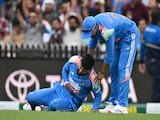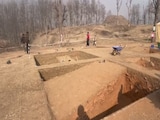The US transport security body has sought a unique "one-stop agreement" with India to end the rescreening of passengers, asserting that the "really powerful" concept will raise global aviation security standards.
Addressing the India US Aviation Summit here on Tuesday, David Pekoske, Administrator of the US Transportation Security Administration (USTSA) said that the one-stop security concept is "very reachable" between the countries.
"I think very tangible and very reachable between India and the United States is one-stop security," he said.
"It's a concept that expedites the flow of passengers and baggage to their destinations by eliminating the duplication of security controls at transfer points," Pekoske said.
He said in the case of a one-stop agreement, passengers who reach an airport in another country and have a connecting domestic flight would not need to be rescreened and their checked bags would go from aircraft to aircraft.
Terming it a "really powerful" concept, Pekoske said it raises global aviation security standards.
"Flights inbound to the United States are more secure. If there's a reverse agreement between the United States and India where US screening satisfies Indian requirements, that means that flights to India would also be more secure. It does require the regular exchange of information," he said.
"It requires improvements to security processes to maintain the agreement. It yields a reduction in security costs through better allocation of resources, reduces flight connection times and missed connections, and improves the passenger experience," he said.
Pekoske said the two countries should consider signing a memorandum of agreement to share sensitive security information.
"We have a category of classification of information that is not classified in the true sense of classified material, but it is sensitive enough that it needs additional protections," he said.
He said that whenever there is a sharing of sensitive security information -- which is critical to a growing partnership -- there is a need to have a memorandum of agreement which covers the aspects of that sharing arrangement.
He noted that both the TSA and India's transportation security posture were born of cruel tragedy.
For India, it was the bombing of Air India 'Kanishka' Flight 182 in 1985, while for the TSA, it was the 9-11 attacks in 2001.
"These tragic events were paradigm shifts in how we both thought about transportation security that continues today," he said.
Meanwhile, addressing the summit, US Federal Aviation Administrator Michael Whitaker said that India and the United States need to work together on issues like aviation safety.
Asserting that safety is a team sport, he said that sharing data between the two countries can allow better identification and mitigation of risks in the sector.
"Our (US and India's) national systems of aviation are inextricably linked into a single global network," he said, adding that the two counties have adjoining air spaces, integrated supply chains, and international services that connect their economies and people.
"We need to work together on issues like safety, we need to share ideas and share innovations, especially in how to safely incorporate some of these new technologies into our airspace," he said.
Noting that the two countries have different systems that will take different approaches to solving challenges, he said, "We can and should work together to share best practices and learn from one another." "We all have an interest in increasing safety within our respective countries, but we must work together to increase the level of safety in the global aviation system," he added.
"This means sharing data. Sharing information allows us to better identify and mitigate risks before those risks become accidents and even before they become failures to the safety layers in our system," he added.
"When I started in aviation, accidents were unfortunately not uncommon. They were almost annual events, and safety regulators learned from those accidents and made the system safer," he said.
"For the past couple of decades, we've moved beyond that model, and accidents are now extremely rare, and they are simply unacceptable as an outcome," Whitaker said.
"Our challenge is to bring safety to the next level, and that means we need to proactively analyse data and find those risks of failure and mitigate those risks before they happen," he said.
Asserting that all the job categories in the aviation sector are highly sought after, he said that "for regulators, it means new questions about how we oversee those operations".
"We have to find a safe yet nimble way to regulate these new entrants who are operating at the speed of a startup while we are operating at the speed of government, he said.
He added that there is a need to figure out how to close the gap, identify these risks and leverage technology to incorporate them safely into the airspace.
"In the US, we've seen the public perception of safety and risk in the system evolve over time. As more people have access to aviation, the expectation grows that the system will be completely safe," he asserted.
(Except for the headline, this story has not been edited by NDTV staff and is published from a syndicated feed.)















